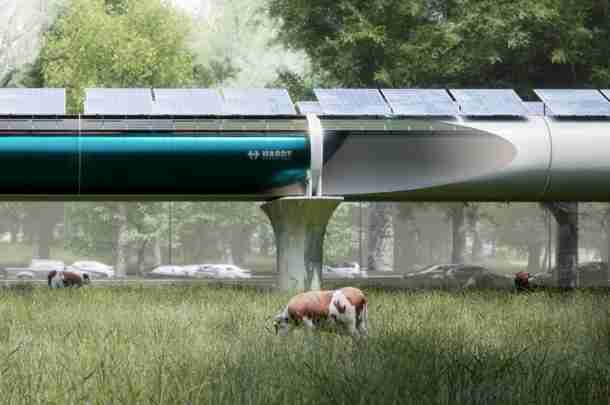As a partner in the Hyperloop Development Program (HDP) Berenschot has completed its second exploratory study, known as Outlook II. This Outlook II provides governments and other parties with insight into the development paths of hyperloop in the Netherlands. Based on interviews with other program partners and on five case studies of disruptive mobility technologies - from Concorde to Japan’s bullet train - Berenschot makes three recommendations. The HDP should clearly define its direction of travel, create perspective for partners and the Dutch context, and address the challenges of sharing risk and raising the significant investments required.
Focus on two strategies
“The main message we heard from our interviewees is that there are two main strategic options for developing hyperloop: develop hyperloop as a mode of transport by exploring and determining functional use cases in existing mobility networks, or develop the different key technologies that make up hyperloop, focusing on spin-off and applications in other fields such as construction and logistics. These two strategies are not mutually exclusive and could enhance one another,” says Niek Overgaauw, mobility consultant at Berenschot. “In both cases it is important to keep the current network of over twenty-five partners closely involved and make optimal use of each other’s contacts and knowledge.”
Hyperloop as a mobility solution
Berenschot examines three aspects of the geographical focus needed to move towards a mobility solution. Firstly, any hyperloop line created in the Netherlands must become part of a European system. Secondly a connection eastward or north eastwards seems the most logical. And thirdly, any hyperloop involving the Netherlands would need to be linked to Schiphol airport.
“Hyperloop technology can potentially add capacity to existing mobility solutions in the Netherlands and elsewhere in the EU. Future long-distance routes with hyperloop could also relieve stress on existing infrastructure, such as for national and regional railway connections. In this early stage of development, it is important that hyperloop technology and infrastructure is standardized, as technological convergence is required to enable seamless cross-border transportation with hyperloop,” says Thijs Smit, innovation advisor at NS.
Catalyst for technological innovation
"Hyperloop can only be realized through collaboration with public and private partners, also on a European level. The HDP focuses on coordinating the development of the hyperloop between different countries that are interested in making this innovation work," emphasizes Coen de Ronde, director of the HDP.
Even if hyperloop does not produce a concrete solution for mobility, its further development could lead to innovative spin-off technologies which could have value in other applications. Hyperloop in itself is a unique set of technological innovations and HDP could put more emphasis on this aspect, including clearly highlighting these key technologies and their importance.
Funding requirements
“Raising and agreeing the funding is always a challenge for major infrastructural investments in the Netherlands,” says Niek Overgaauw. The case studies in this Outlook show that development and investment budgets can be a big hurdle for new and innovative initiatives. But while the budgets and risks are substantial, most of the investments in the innovative mobility solutions considered did deliver at a certain point in time. Financial engineering, involving partners with a long-term commitment, could be the best way to raise the money and share the risks, concludes the study.
